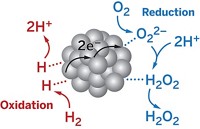Advertisement
Grab your lab coat. Let's get started
Welcome!
Welcome!
Create an account below to get 6 C&EN articles per month, receive newsletters and more - all free.
It seems this is your first time logging in online. Please enter the following information to continue.
As an ACS member you automatically get access to this site. All we need is few more details to create your reading experience.
Not you? Sign in with a different account.
Not you? Sign in with a different account.
ERROR 1
ERROR 1
ERROR 2
ERROR 2
ERROR 2
ERROR 2
ERROR 2
Password and Confirm password must match.
If you have an ACS member number, please enter it here so we can link this account to your membership. (optional)
ERROR 2
ACS values your privacy. By submitting your information, you are gaining access to C&EN and subscribing to our weekly newsletter. We use the information you provide to make your reading experience better, and we will never sell your data to third party members.
Physical Chemistry
Sulfide Mineral Reduces CO2
Geochemistry: Catalytic reactions produce simple organics common in prebiotic chemistry
by Elizabeth K. Wilson
May 4, 2015
| A version of this story appeared in
Volume 93, Issue 18
An iron sulfide mineral that forms in deep sea hydrothermal vents can convert CO2 and hydrogen to small bioorganic molecule precursors such as methanol and formic, acetic, and pyruvic acid (Chem. Commun. 2015, DOI: 10.1039/c5cc02078f). The discovery, by Nora H. de Leeuw of University College London and colleagues, provides a potential lead for developing environmentally friendly catalytic syntheses of plastics and fuels. It also lends credence to the theory that prebiotic chemistry flourished in the mineral- and carbon-rich alkaline environment that typifies some hydrothermal vents. Scientists have known that this mineral, greigite (Fe3S4), resembles the ferredoxin center of the CO dehydrogenase enzyme. In previous studies, researchers showed that greigite can convert CO2 to gaseous CH4 and CO. However, to serve as prebiotic precursors, small organics must be in solution. So the team performed experiments at various pH values and found that an alkaline environment was key to producing methanol and the other small organics that are solution-based at atmospheric pressure and room temperature. And by using computational methods, the group explained the dependence of the methanol and formic acid formation mechanisms on alkaline conditions.





Join the conversation
Contact the reporter
Submit a Letter to the Editor for publication
Engage with us on Twitter